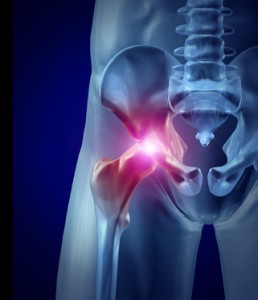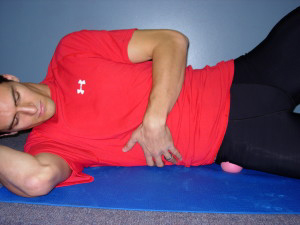Making Hip Pain Go Away
Author: Julie Donnelly
 Do you have joint pain or stiffness? Does it hurt when you’ve been sitting and you try to get up and walk? Have you tried to stretch and either it feels good for a few minutes and then you’re back to square one, or maybe even worse, it hurts more than it did before? Do you sometimes feel like your joints are just tied down and you’re no longer flexible? Do you maybe even blame it on “old age?” The odds are extremely high that all that’s happening is your muscles are in spasm.
Do you have joint pain or stiffness? Does it hurt when you’ve been sitting and you try to get up and walk? Have you tried to stretch and either it feels good for a few minutes and then you’re back to square one, or maybe even worse, it hurts more than it did before? Do you sometimes feel like your joints are just tied down and you’re no longer flexible? Do you maybe even blame it on “old age?” The odds are extremely high that all that’s happening is your muscles are in spasm.
If any of these statements fit you, you’ll really love today’s message. As a bonus, at the end of this blog you’ll learn a self-treatment that you’ll love if you ever have hip pain.
I’ve mentioned many times that a tight muscle pulling on a tendon will cause joint pain, just like pulling on your hair will cause your scalp to hurt. And, just like the only way to stop the pain in your head is to let go of your hair, the only way to stop the pain in your joint is to release the tight muscle.
Another analogy that I use frequently has to do with stretching and why you may feel worse AFTER you stretch than you did before you stretched. If you took a 12” line and tied enough knots in it so it is now 11”, and then you try to stretch it back to 12” without first untying the knots, you can see what would happen. The knots would become tighter and the fibers on either side of the knot would be overstretched and could possibly even tear. If the line was attached to a fixed point on either side you can imagine the strain that is happening to the attachment points. This is exactly what is happening to you when you when you stretch a muscle that is tied up in knots (spasms). You can see how important it is to first release the spasms before stretching.
Today I’d like to share with you how to do one of the Julstro self-treatments that we teach on the Julstro self-treatment DVD. So many people have hip pain that I’d like to explain how to treat the tensor fascia lata muscle which is located on the outside of your hip, between your hip bone and the top of your thigh bone:
 Using a tennis ball (hollow in the center so it is a bit less intense) or a Perfect Ball (solid in the center so it gets in deeper) place the ball right where the side-seam of your pants is located – between the two bones. If you are in a lot of pain, start by leaning into a wall. If you want to go deeper into the muscle, lie on the floor on top of the ball. You may need to move an inch or so to find the “epicenter” of the spasm, but you’ll know immediately when you locate it. Always make sure you keep your pressure to a “hurts so good” level, you’re in control so don’t over-do.
Using a tennis ball (hollow in the center so it is a bit less intense) or a Perfect Ball (solid in the center so it gets in deeper) place the ball right where the side-seam of your pants is located – between the two bones. If you are in a lot of pain, start by leaning into a wall. If you want to go deeper into the muscle, lie on the floor on top of the ball. You may need to move an inch or so to find the “epicenter” of the spasm, but you’ll know immediately when you locate it. Always make sure you keep your pressure to a “hurts so good” level, you’re in control so don’t over-do.
Once you find the spasm, which is also called a “trigger point,” just stay still on it for 30-60 seconds. Lift your weight off the ball for a few breaths and then press into the ball again. This second time you’ll find that it won’t be as painful as the first time because you have already pressed out some of the H+ ions that are causing the spasm (and the pain).
Keep repeating this for a few minutes and then slightly move your body so you can find other trigger points that are around your hips. You’ll probably find points that are a little bit toward the front of your hip, so make sure you rotate your body so you’re facing more toward the wall or the floor, and then rotate your body so you’re back is more toward the wall or the floor.
This one simple technique has saved several of my clients from thinking they needed hip surgery! It will help you move easier and with less discomfort – and often it will totally eliminate the pain from your hip completely.
These statements have not been evaluated by the Food and Drug Administration. This information is not intended to diagnose, treat, cure or prevent any disease.
